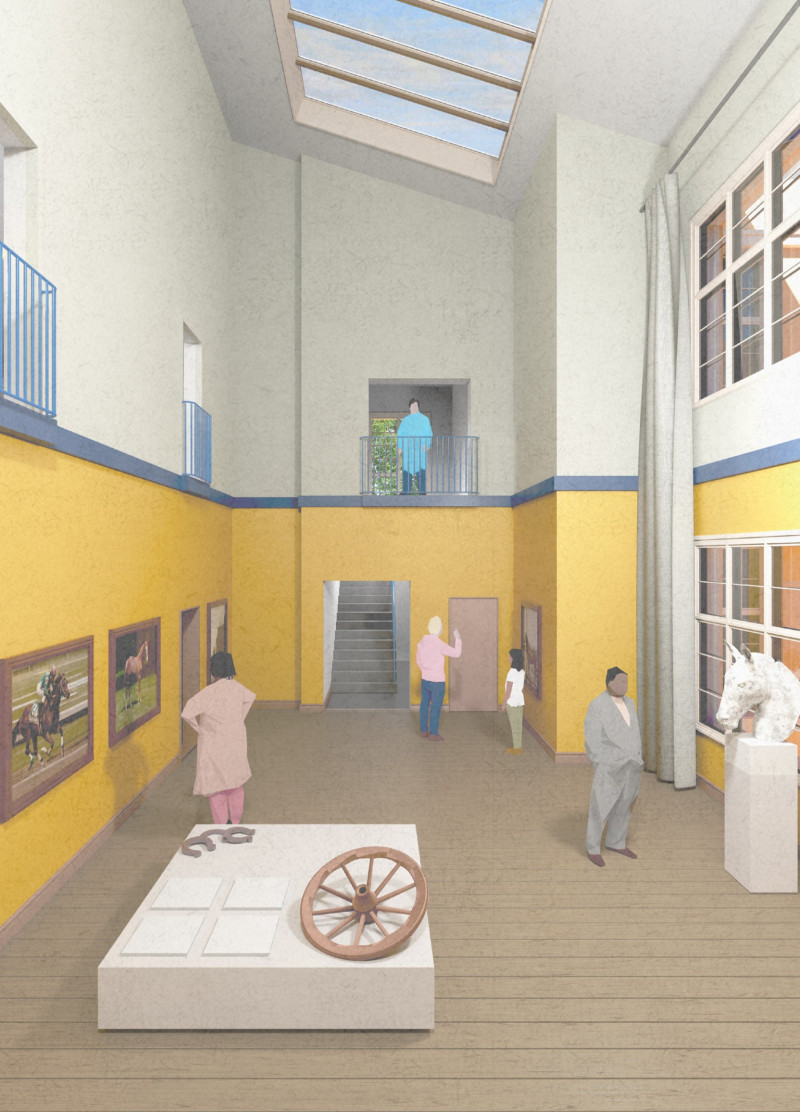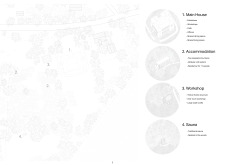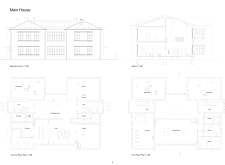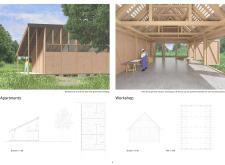5 key facts about this project
The architecture features a blend of existing and new structures, highlighting the original building's historical characteristics while accommodating contemporary needs. The design incorporates important spaces such as exhibition halls, artist workshops, and living quarters for residents. A central element of the project is the introduction of a double-height exhibition space, enhanced with natural light through skylights, fostering an inviting environment for the display of artworks.
Integration of Natural and Functional Elements
One of the unique aspects of this project is its focus on sustainability and local material utilization. The architects selected materials that blend seamlessly with the landscape, such as wood for new structures and concrete for foundational support. This attention to materiality not only promotes environmental sustainability but also underscores the project’s connection to local craftsmanship. The use of glass in the design enhances natural light and visual accessibility, promoting an open dialogue between the interior spaces and the surrounding environment.
An additional distinctive feature is the modular approach to new constructions. This modular design facilitates flexibility in the arrangement of spaces, allowing for potential future expansions based on the evolving needs of the museum. The carefully considered layout accommodates a variety of activities, from public exhibitions to artist workshops, while ensuring ease of circulation for visitors.
Community-Centric Design Approach
The Omuli Museum of the Horse emphasizes community engagement through its multifunctional spaces. The design incorporates a café and shared living areas, encouraging interactions among artists, community members, and visitors. By prioritizing public accessibility and collaboration, the project serves as a cultural hub that meets diverse community needs. The incorporation of artist residences promotes creative output and sustains a vibrant artistic community, reinforcing the museum's role as a center for cultural development.
Each element of the Omuli Museum of the Horse has been meticulously designed to balance functionality with aesthetic appeal, creating a space that serves both the community and the artistic future of the region. To explore detailed architectural plans, sections, and further insights into the unique design ideas behind the project, please review the project presentation. This resource provides an opportunity to delve deeper into the architectural innovations and community-focused design strategies that define this significant cultural landmark.


























